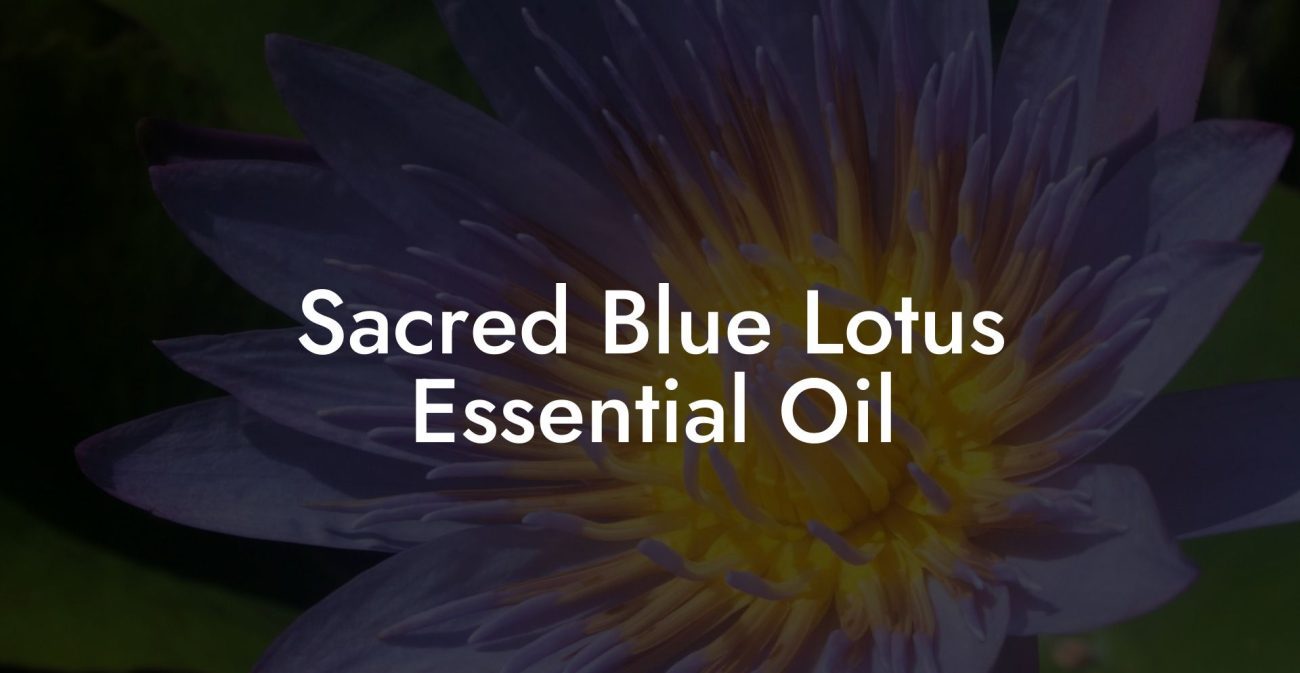Imagine a tranquil oasis filled with the alluring fragrance of Blue Lotus, a mystical bloom known for its intoxicating aroma and mystical allure dating back to Ancient Egypt. The Blue Lotus, botanically known as Nymphaea caerulea, is a stunning water lily that symbolizes spiritual growth and represents the universe itself. Widely used for making therapeutic lotus oil, this flower is steeped in history and possesses a plethora of therapeutic benefits.
If you've always wanted to cultivate your own Blue Lotus plant and indulge in the captivating scent of this exotic bloom, you're in the right place. In this comprehensive guide, we will teach you how to build a thriving garden of Blue Lotus right at home. So, let's dive in and embark on this fascinating journey into the world of Blue Lotus cultivation.
1. Choosing Your Blue Lotus Plant
To begin with, you'll need to choose the right variety of Blue Lotus for your needs. The Blue Lotus comes in various forms, such as plants, seeds, and bulbs. For first-time growers, we recommend starting with a plant or bulb, as they are easier to cultivate than seeds.
You can find Blue Lotus plants or bulbs at your local garden center, or purchase them online from reputable nurseries specializing in aquatic plants. Make sure you acquire healthy plants with robust root systems and no visible signs of disease or damage.
2. Preparing Your Planting Site
Blue Lotus plants thrive in aquatic environments like ponds, water gardens or large containers filled with water. Regardless of your choice, ensure the intended site receives ample sunlight, as your Blue Lotus plant will need a minimum of six hours of sunlight daily.
For container growing, use a large, sturdy container with no drainage holes. Fill the container with a layer of heavy loam soil or aquatic plant soil, avoiding potting mixes and peat-based soils as they may float or cloud the water.
3. Planting Your Blue Lotus
Gently remove the Blue Lotus plant or bulb from its original container, ensuring you preserve its delicate roots. Create a slight depression in the soil within your prepared planting site and place your Blue Lotus plant or bulb at a 45-degree angle. This positioning encourages the growth of horizontal rhizomes which ultimately contributes to a healthy, vibrant plant.
Cover the roots and rhizomes with soil, leaving the emerging leaves and bud exposed. Additionally, place a layer of pea gravel or sand on top of the soil to prevent it from being disturbed as the plant settles in its new environment.
4. Watering and Fertilizing
Fill your pond, water garden or container with water, submerging your Blue Lotus plant at a depth of six to 12 inches. This aquatic plant flourishes when constantly submerged in water, so make sure the water level remains consistent. Use rainwater or tap water that has been allowed to sit for 24 hours to ensure any chlorine evaporates.
Fertilize your Blue Lotus plant monthly during the growing season using a slow-release aquatic plant fertilizer designed specifically for water lilies. Be cautious not to over-fertilize, as it may lead to excessive algae growth.
5. Regular Maintenance
As your Blue Lotus plant grows, it will inevitably produce yellowing or decaying leaves. Prune these to encourage the growth of fresh, healthy foliage. Regularly remove any debris or decaying matter from your pond, water garden or container to maintain a healthy environment for your Blue Lotus to thrive.
How To Build Blue Lotus Example
Sarah had always been captivated by the elusive charm of Blue Lotus and decided to take up the challenge of cultivating her own at home. By following the guidelines outlined in this article, she prepared a custom-made pond in her backyard and carefully planted her Blue Lotus bulbs. Sarah made sure to provide the right growing conditions, fertilize her plants and maintain her pond diligently. Within a few months, her garden became a mesmerizing sanctuary filled with the enchanting scent of Blue Lotus blossoms.
Now that you are equipped with the knowledge to build and nurture your Blue Lotus haven, it's time to embark on this serene and satisfying journey into the world of aromatic elixirs. Once you've mastered the art of cultivating Blue Lotus, indulge in its therapeutic benefits and cherish the mystical, timeless connection it offers. Share your experience with friends or even gift them a fragrant bottle of blue lotus oil from your garden.
Continue exploring the wondrous world of Blue Lotus through our other comprehensive guides on Pure blue lotus oil and let us know about your progress in the comments below. Happy growing!
















